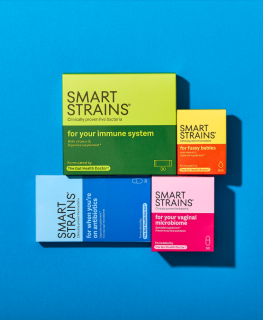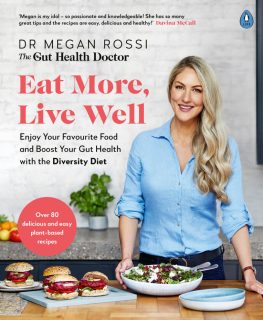I’m always asked “what’s the one best thing I can eat for my gut health?” – and I totally get why it’s tempting to focus on the ‘best’ foods, when we’re constantly bombarded with messages of “5 best foods for your gut” alongside “5 foods to avoid that cause bloating”… We’re often trained to think about foods as ‘good’ or ‘bad’ and, naturally, we want the best for our gut health.
But looking after your gut health isn’t this black and white. It’s full of colour! And all the variety Mother Nature has to offer. So fixating on only one or a few ‘best’ foods misses the key principle of good gut health: dietary diversity.
That’s where The Diversity Diet comes in – my inclusive way of eating for optimal health from the inside out.
You’ve probably already heard me banging on about this diversity when it comes to our diets – now I’m diving into why exactly that’s so important, and giving you a practical guide to embracing The Diversity Diet, kickstarting with our 28-day Plant Points Challenge.
Because, ultimately, diversifying the variety of plants you eat really can significantly improve your gut (and overall) health.
In a nutshell: The more diversity in your plant-based diet, the more diverse the nutrient supply for your GM (think dietary fibres, prebiotics and polyphenols). All in all, this equates to a well-fed and diverse range of happy gut microbes, each with their own unique skill set to look after us every day.
The state of our dietary diversity
Did you know 75% of the world’s food is generated from just 12 plant and 5 animal species?
Essentially, this means that both our taste buds and our GM (gut microbiota, the trillions of microbes in our gut) are missing out on so many foods.
The consequence? Our array of different gut microbes (including bacteria), which need a diverse nutrient supply to survive and flourish, are at risk of being starved by an unvaried diet – and this may very well explain why, compared to our ancestors, our GM diversity as a population has taken a big hit.
What’s more, our range of plant-based foods is now 75% lower than in the 1900s (according to the United Nations) because of the demand for “perfect” food.
Think about the way you shop. Do you always reach for those shiny, red, extra-sweet apples, or do you go for the odd-shaped ones with colour imperfections? Many of us can admit we’re attracted to the shiny red ones. But often the types which are exposed to more stressful growing conditions (resulting in imperfections) actually contain more polyphenols (health-promoting plant chemicals). So next time, hunt for and celebrate those imperfections!
The influence of the Western diet
The Western diet, stereotypically limited in fibre and plants while being high in added sugar, processed fast food and high intakes of salt, has been implicated in just about every chronic disease.
We haven’t always eaten like this, but when the Industrial Revolution spread across the Western world, food preparation moved from people’s kitchens onto manufacturing lines. Processed food was in, whole food was out. And, as a result, daily fibre intakes plummeted (while added sugar intakes sky-rocketed).
Fibre fame
It was previously thought that fibre had no perceived nutritional benefit because it can’t be digested by human cells. Instead, it was regarded as waste and used for animal feed.
As the science has evolved, particularly as we’ve discovered more about the power of the gut and our GM, fibre has become a highly praised nutrient (rightly so) – it’s our microbes’ favourite nutrient.
That said, refined grains are still popular and 9 in 10 of us are still not getting enough fibre.
Nourishing your GM with delicious diversity
The good news is that nourishing your GM certainly doesn’t require a strict diet, nor does it mean you have to cut out a long list of foods – or give up the enjoyment of eating.
For those after more of a scientific incentive, if you learn how to create a varied and delicious diet that keeps your GM happy, research suggests you’ll soon see the far-reaching benefits.
These benefits go way beyond kicking any gut symptoms, to supporting your immune system and increasing your ability to fight diseases, improving your happiness levels, your metabolism, and even the health of other organs, such as your heart, your skin and your liver (your main detoxing organ).
Why 30?
A large study showed those who ate at least 30 plants a week were found to have higher levels of GM diversity than those who ate 10 or fewer a week. But it’s no magic number! If you’re already hitting 30, don’t stop there – I recommend many of my clients to go even further, enjoying 40 or even 50 plants weekly.
Aim for thirty plant points a week across all plant-based food groups (that’s thirty different fruits, vegetables, whole grains, legumes, nuts and seeds, herbs and spices). It quickly adds up and is easier than you may think.
Join the 28-day Plant Points Challenge today. Starts Monday 3 May 2021.
10 Ways To Diversify Your Diet
1. Multipack magic. Rather than just buying one type of salad leaf, go for pre-mixed combinations with the grated carrot, rocket and cabbage too.
2. Get among the grains. Be experimental with new types, such as freekeh, quinoa and barley – the mixed packs are perfect for adding to soups, stews and salads, and are available in most supermarkets without a crazy price tag.
3. Eat the rainbow. Instead of just getting the red peppers for your stir fry, go for the yellow, orange and green too. The red and green grapes, the yellow and red tomatoes. Each different colour counts as another diversity hit.
4. Make the most of breakfast. Stuck on the same breakfast routine on repeat? Top your avocado toast with mixed seeds, add grated carrot and courgette to your overnight oats.
5. Love the legumes. Beans and pulses are underrated, yet they’re one of the most cost-efficient, widely available foods that are packed with prebiotics and fibre. Plus, you can get them in handy mixed cans for four different types in one.
6. Herb and spice up your life. Not only do herbs and spices add flavour, but each one gets a quarter of a point towards your 30 a week.
7. Befriend the blender. Spreads, dips, dressings, sauces, fillings – all great opportunities to sneak some extra plant foods into any dish.
8. Sprinkle with seeds. Never mind salt, pop a bottle of mixed seeds on your dining table and add a little sprinkle to your meals. Each different type of seed is an extra diversity point.
9. Try something new every week. Forget your usual habit buys and seek out new fruits, vegetables or wholegrains you haven’t tried yet. You can get the kids involved too by letting them choose a ‘new food of the week’.
10. Mix up your meal prep. If you steamed your vegetables one night, try adding some olive oil, herbs and spices and baking them next time.














